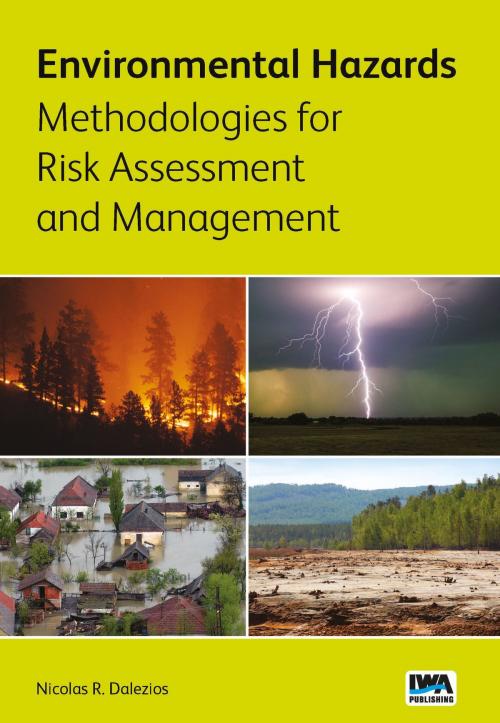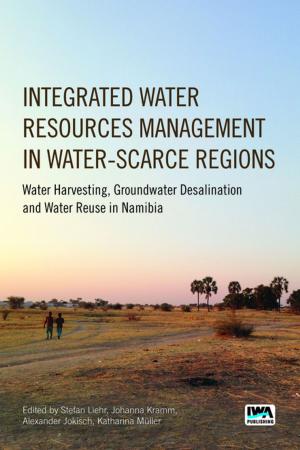Environmental Hazards Methodologies for Risk Assessment and Management
Nonfiction, Science & Nature, Science, Other Sciences, Applied Sciences, Biological Sciences, Environmental Science, Technology| Author: | ISBN: | 9781780407135 | |
| Publisher: | IWA Publishing | Publication: | February 15, 2017 |
| Imprint: | IWA Publishing | Language: | English |
| Author: | |
| ISBN: | 9781780407135 |
| Publisher: | IWA Publishing |
| Publication: | February 15, 2017 |
| Imprint: | IWA Publishing |
| Language: | English |
From the beginning of 21st century, there has been an awareness of risk in the environment along with a growing concern for the continuing potential damage caused by hazards. In order to ensure environmental sustainability, a better understanding of natural disasters and their impacts is essential. It has been recognized that a holistic and integrated approach to environmental hazards needs to be attempted using common methodologies, such as risk analysis, which involves risk management and risk assessment. Indeed, risk management means reducing the threats posed by known hazards, whereas at the same time accepting unmanageable risks and maximizing any related benefits. The risk management framework involves evaluating the importance of a risk, either quantitatively or qualitatively. Risk assessment comprises three steps, namely risk identification (data base, event monitoring, statistical inference), risk estimation (magnitude, frequency, economic costs) and risk evaluation (cost-benefit analysis). Nevertheless, the risk management framework also includes a fourth step, risk governance, i.e. the need for a feedback of all the risk assessment undertakings. There is currently a lack of such feedback which constitutes a serious deficiency in the reduction of environmental hazards. This book emphasises methodological approaches and procedures of the three main components in the study of environmental hazards, namely forecasting - nowcasting (before), monitoring (during) and assessment (after), based on geoinformatic technologies and data and simulation through examples and case studies. These are considered within the risk management framework and, in particular, within the three components of risk assessment, namely risk identification, risk estimation and risk evaluation. This approach is a contemporary and innovative procedure and constitutes current research in the field of environmental hazards. Environmental Hazards Methodologies for Risk Assessment and Management covers hydrological hazards (floods, droughts, storms, hail, desertification), biophysical hazards (frost, heat waves, epidemics, forest fires), geological hazards (landslides, snow avalanches), tectonic hazards (earthquakes, volcanoes), and technological hazards. This book provides a text and a resource on environmental hazards for senior undergraduate students, graduate students on all courses related to environmental hazards and risk assessment and management. It is a valuable handbook for researchers and professionals of environmental science, environmental economics and management, and engineering. Editor: Nicolas R. Dalezios, University of Thessaly, Greece
From the beginning of 21st century, there has been an awareness of risk in the environment along with a growing concern for the continuing potential damage caused by hazards. In order to ensure environmental sustainability, a better understanding of natural disasters and their impacts is essential. It has been recognized that a holistic and integrated approach to environmental hazards needs to be attempted using common methodologies, such as risk analysis, which involves risk management and risk assessment. Indeed, risk management means reducing the threats posed by known hazards, whereas at the same time accepting unmanageable risks and maximizing any related benefits. The risk management framework involves evaluating the importance of a risk, either quantitatively or qualitatively. Risk assessment comprises three steps, namely risk identification (data base, event monitoring, statistical inference), risk estimation (magnitude, frequency, economic costs) and risk evaluation (cost-benefit analysis). Nevertheless, the risk management framework also includes a fourth step, risk governance, i.e. the need for a feedback of all the risk assessment undertakings. There is currently a lack of such feedback which constitutes a serious deficiency in the reduction of environmental hazards. This book emphasises methodological approaches and procedures of the three main components in the study of environmental hazards, namely forecasting - nowcasting (before), monitoring (during) and assessment (after), based on geoinformatic technologies and data and simulation through examples and case studies. These are considered within the risk management framework and, in particular, within the three components of risk assessment, namely risk identification, risk estimation and risk evaluation. This approach is a contemporary and innovative procedure and constitutes current research in the field of environmental hazards. Environmental Hazards Methodologies for Risk Assessment and Management covers hydrological hazards (floods, droughts, storms, hail, desertification), biophysical hazards (frost, heat waves, epidemics, forest fires), geological hazards (landslides, snow avalanches), tectonic hazards (earthquakes, volcanoes), and technological hazards. This book provides a text and a resource on environmental hazards for senior undergraduate students, graduate students on all courses related to environmental hazards and risk assessment and management. It is a valuable handbook for researchers and professionals of environmental science, environmental economics and management, and engineering. Editor: Nicolas R. Dalezios, University of Thessaly, Greece















